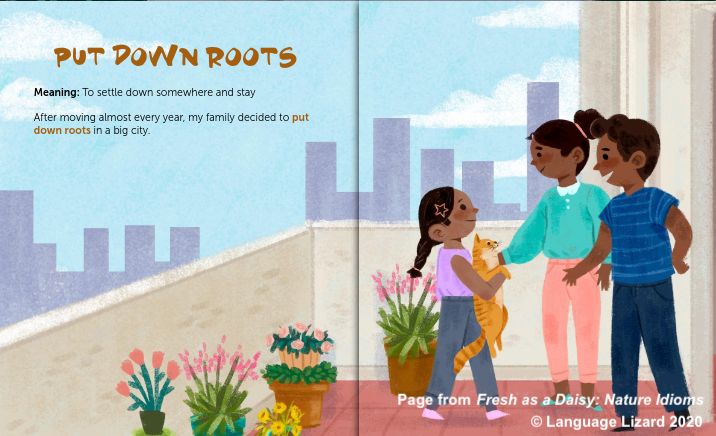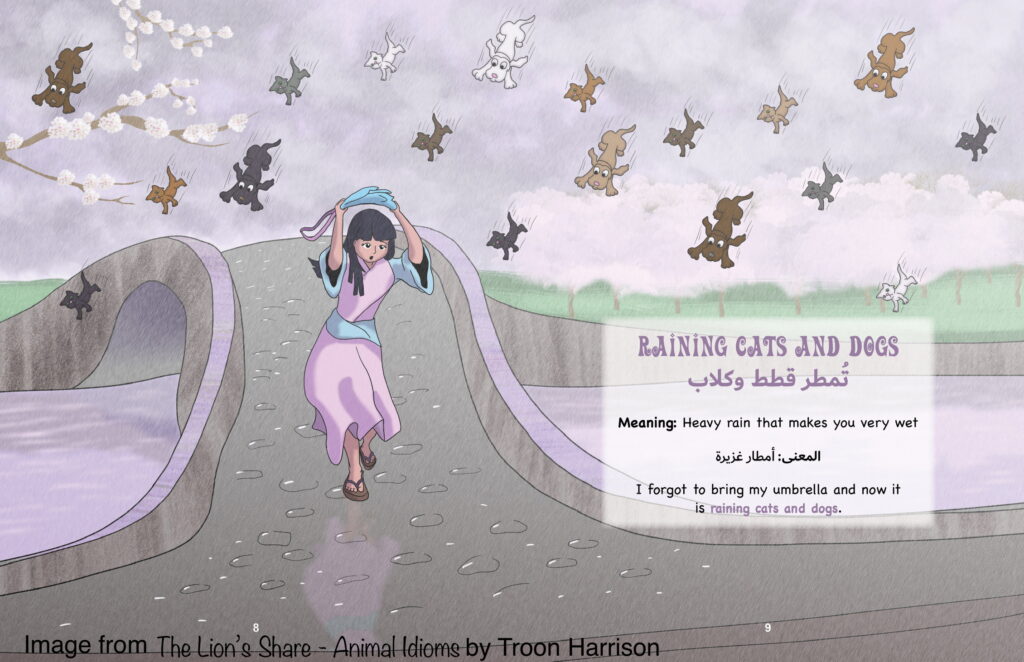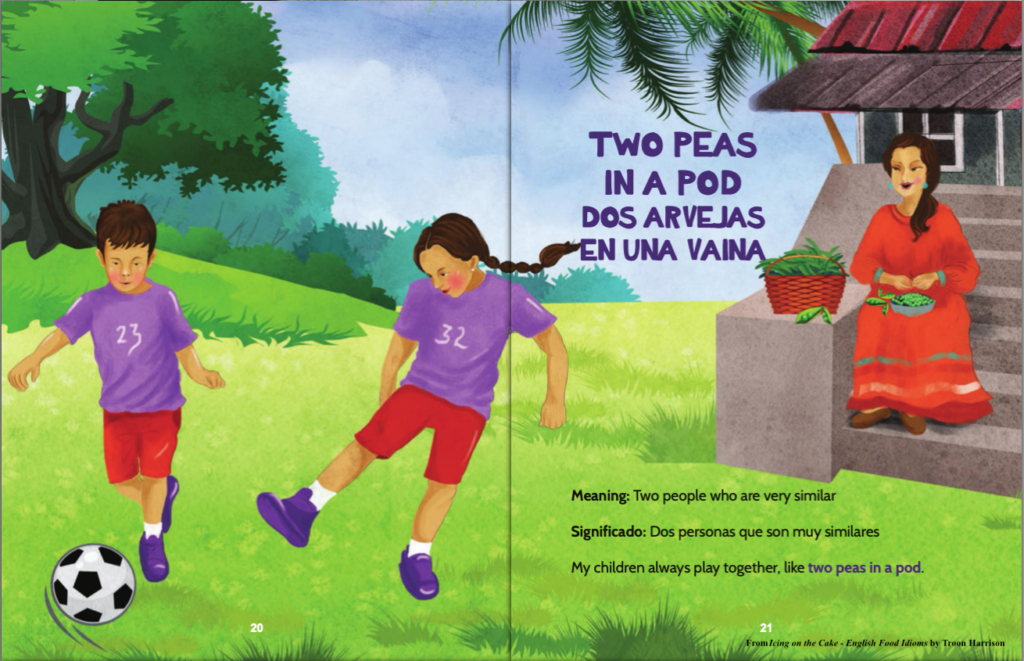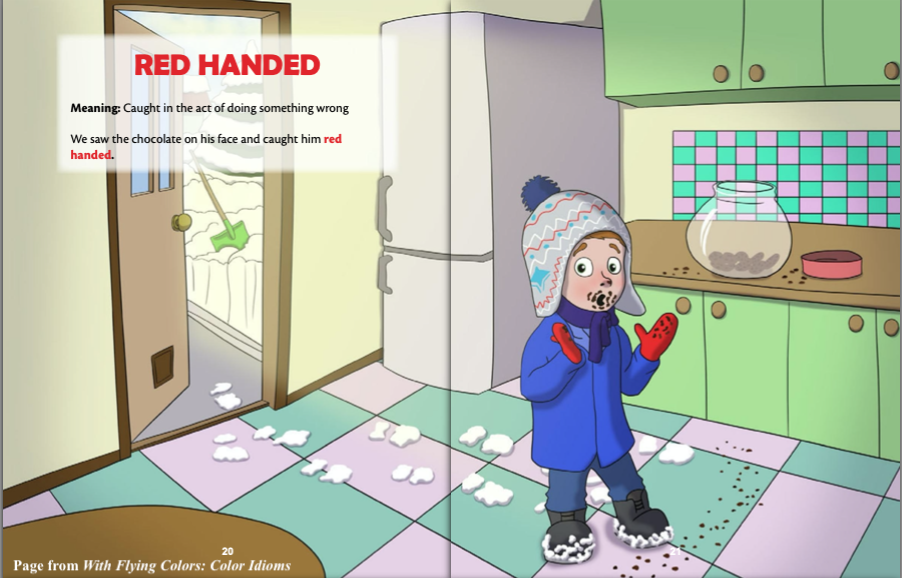This year, Idiom Week is January 24-30. This is a great opportunity for students to have multicultural and language learning fun with idioms. Here are some ways for students to “have a ball” during Idiom Week. Use hashtag #IdiomsRock on social media, and tell us about your favorite idioms from any language!
Idiom: More Than the Sum of Its Words
An idiom is a phrase that says one thing, but means something different. Idioms can be a quick way of saying something complicated. Check out our previous post to learn about idioms in-depth.
Idioms are an important part of every language, so it’s vital that students learn them. Every culture has thousands (maybe even tens of thousands) of idioms, so a lot of casual conversation can occur through the use of idioms.
Effective communication is certainly more difficult without knowledge of local idioms. This is true for students learning a second language, as well as adult English learners, and students with special needs.
Not to mention, learning idioms is one of the most fun parts of learning a new language, so there’s no reason not to “dive right in!”
Idiom Week Activities Students Will Love
There are many ways for students to have fun learning idioms, whether during virtual or in-person instruction.
A Closer Look at Multicultural Idioms
Idioms are a window into the history and heritage of a culture. Talk with your students about how idioms exist in every culture around the world, and discuss ways they are similar or different from idioms we use.
After finding idioms in other languages online, have students break them down by translating the words directly, and look at how their meanings are not immediately obvious that way. Then, ask students to discuss what each idiom’s true meaning might be. Lastly, what might each idiom tell us about various cultures? Can we learn something about each culture’s history, or about what’s important in the daily lives of those people?
Another fun activity is to compare similar idioms that occur in different languages. How are they different, and what might be behind those slight differences?
Theme Days During Idiom Week
Choose a theme for each day of Idiom Week, and ask students to report back with their favorite idiom to share with the class. For example, if the theme is Animal Idioms, students might share “get my ducks in a row,” or “at a snail’s pace.” Other great themes for Idiom Week are food, colors, and nature.
Encourage students from families that speak another language to share idioms in their home language and their translations. For example, the class might be surprised that in French, a sad person would “have the cockroach!”
If you decide to study food idioms with your class, share this fun food idioms introductory video as part of your lesson.
Idiom Guessing Games
Present an idiom, and ask students to guess its meaning. Younger kids may need to start with common idioms they’re familiar with, like “over the moon” or “caught red-handed.”
For older students, find more challenging outdated idioms online. For example, an idiom like “happy cabbage” is sure to generate lots of discussion.
For more interactive fun, have students draw out their favorite idioms, or act them out in a game of charades.
Idiom Resources and Books in Many Languages
Language Lizard Idiom Books (available in paperback and eBook) are a great resource for teachers in virtual, in-person, or blended classrooms, as well as homeschooling families. Idiom Books come with a variety of FREE activities to share with students and families.
“I was very impressed with this whole series of idiom books. I like that each book has it’s own theme and each page has such colorful, interesting pictures. I also personally liked the diversity of cultures depicted within the pictures. I work with kids on the spectrum who don’t necessarily intuitively know expressions and idioms. Since people with autism are often visual learners, the pictures were very helpful to them to understand the meaning. The definitions and examples were also very straightforward and used simple enough language, that they could understand what the idiom meant and how it was used. They were excited to learn each idiom and see what the next idiom was. I would highly recommend this whole series for anyone working with the types of learners that I work with.
Jane Conklin, Special Education Teacher, BCBA, M.Ed
Free Multicultural Lesson Plans and Activities
The free lesson plans that come with the Idiom Books explore idioms in a multicultural context, and include activities students can do with their families, even those that speak a language other than English at home.
Many of the activities included allow students to practice idioms while learning about other cultures. Just a few examples:
- Hindu Holi Festival: fill-in-the-blank short story using color idioms
- Guess the National Animal Activity
- Multicultural Street Foods Activity
In-Depth Idiom Resources
Language Lizard Idioms Books also come with links to learn in-depth background information and history about all the idioms featured in the books.
Many of the illustrations show characters and settings from around the world, providing opportunities to teach children about other cultures and communities.
Have you studied idioms with your students? Share your lesson ideas below, or tell us about your #IdiomsRock on social media.






